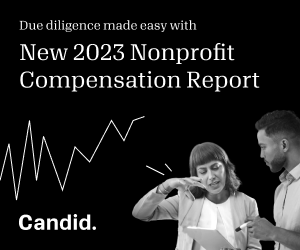How to minimize risk when implementing trust-based philanthropy

Trust-based philanthropy (TBP) drew attention during the pandemic as nonprofits needed to respond quickly to changing needs. It has taken on many names as the concept has grown in scope and popularity, but essentially, it lessens the burden on nonprofit grantees and creates a more equitable power dynamic between funders and grantees.
Rather than giving all the power to the funder’s priorities, TBP allows nonprofits to spend funds where they are most needed—to maximize their benefit. This may allow a nonprofit to shore up its general operating budget to allow for better long-term planning or to respond to an immediate need. It enables smaller nonprofits that may not have the administrative capacity required under traditional grantmaking to apply for and receive grants to further their mission.
Despite its widespread acceptance, there is still some confusion about how to implement TBP. Here are a few technical considerations.
Update processes to meet needs
A lot of the confusion around implementation arises from the fact that it changes the giving model for many private foundations.
Multiyear unrestricted grants are common for TBP. If the foundation is not used to awarding multiyear grants, they need to ensure that they are tracking future commitments for budgeting, cash flow, and minimum distributions, as required by tax regulations.
The “trust” in trust-based philanthropy is largely built on rigorous due diligence, though this work is framed as part of a deep relationship. Instead of an investigation that relies on information submitted by a nonprofit, due diligence should be approached holistically—to understand the potential grantee’s leadership, programs, and finances. This transfers the burden of diligence to the grantmaker.
Funders should pay special attention to financial statements, which will offer insights into the overall business model, deficits or surpluses, and how the organization is sustaining its work as well as who else is in its funding portfolio.
This information should help private foundations understand how the organization would benefit from grant funding.
Document everything
A tenet of trust-based philanthropy is reducing unnecessary paperwork. The idea behind this is to streamline processes and dismantle structural barriers that may prevent a nonprofit from fulfilling its needs due to the administrative burden.
But this does not mean reducing documentation. As auditors, we review grant agreements and have seen the importance of keeping up-to-date policies and procedures. As foundations adopt a more relational approach, they should keep detailed notes to ensure that no information is lost in the process. However, the burden of documentation falls on the grantmaker to maintain instead of the grantee to provide.
It is important to develop concrete policies and procedures around TBP and ensure that team members keep these policies in mind. As they are rewritten, policies and procedures should still follow the foundation’s original mission and intentions.
Grant agreements should also be rewritten to ensure that they embrace TBP principles while remaining in line with the foundation’s policies and procedures. If this is the foundation’s first foray into multiyear grants, make sure that the accounting staff understands the terms of the agreements and accounts for the grants in the proper accounting period.
Build trust in all directions
At its core, trust-based philanthropy is based on the idea that nonprofits’ needs evolve as community needs change. TBP goes beyond adopting a program and finding success and focuses on fostering a strong ongoing relationship.
Foundations should remember that trust must be cultivated and maintained, and a trust-based model should undergo continuous improvement. Communication with grantees should remain open, with regular touchpoints to ensure that both parties are happy with the relationship, and with nonmonetary support offered in addition to funding to empower the grantee for success.
In the same way that grantees are trusted to spend funds how they see fit, funders should also be trusted to solicit feedback, stay open-minded, and consider adjusting processes.
TBP is based on a strong relationship between the grantmaker and grantee, yet private foundations have other stakeholders to consider outside of a specific grant transaction. When making the switch to TBP, keep all stakeholders in the loop. Do not forget about board members, legal experts, auditors, the tax team, and other advisors. Rigorous documentation can help with this step, since getting all new information down on paper will help as information is disseminated.
Proponents of TBP believe that this movement builds a more just and equitable society. Although it reduces administrative barriers for the grantee, it does not eliminate the need for administration and documentation. Rather, it builds accountability on both sides—with equity in mind—by sharing the burden and allowing grantees to do what they do best: serve the community.
Stephanie Yan is the private foundation practice leader at GHJ, a national advisory and accounting firm. Amber Coatney is a manager in GHJ’s audit and assurance practice with a specialty focus on nonprofits.








How to trust: When funders and grantees get it right